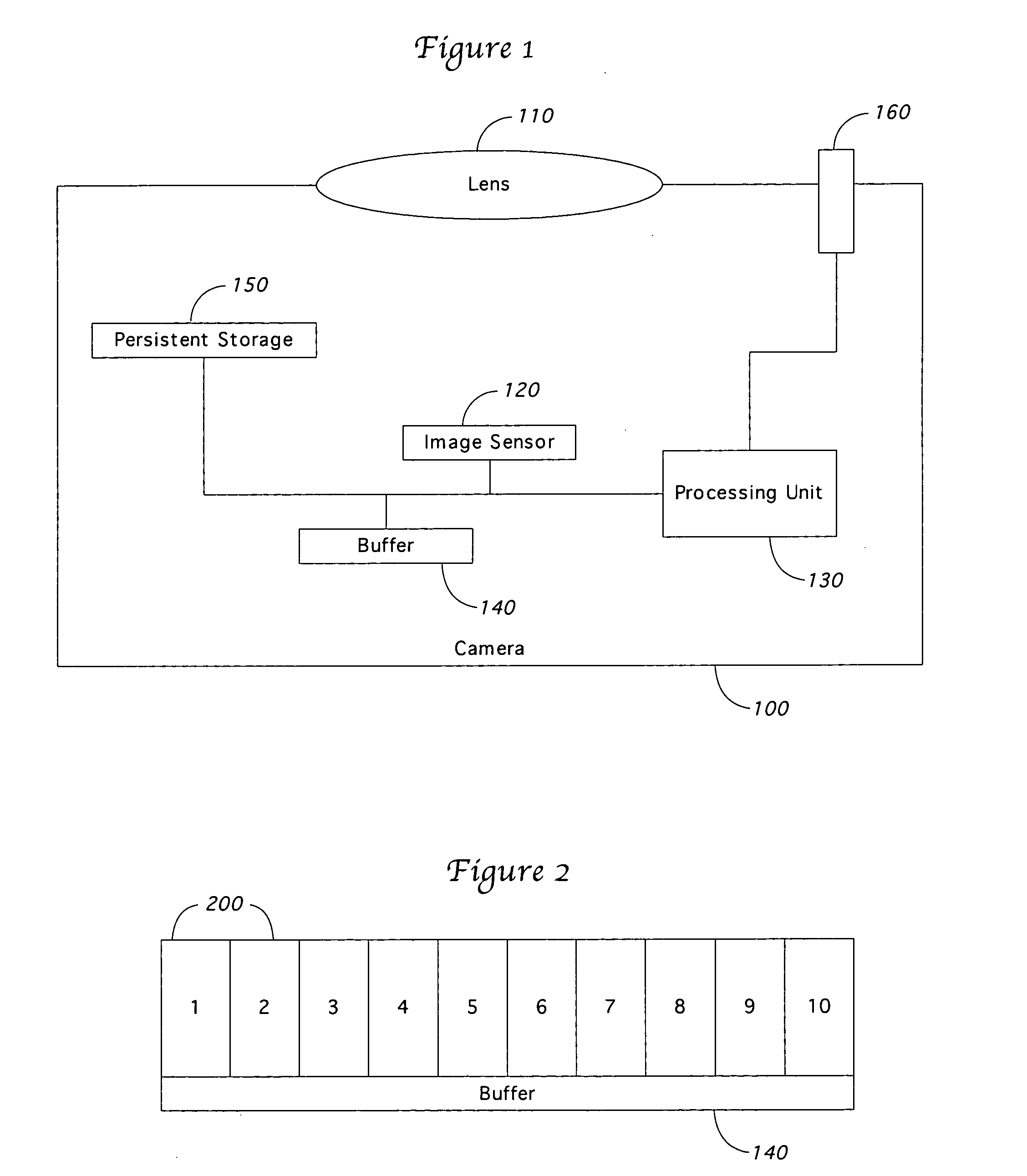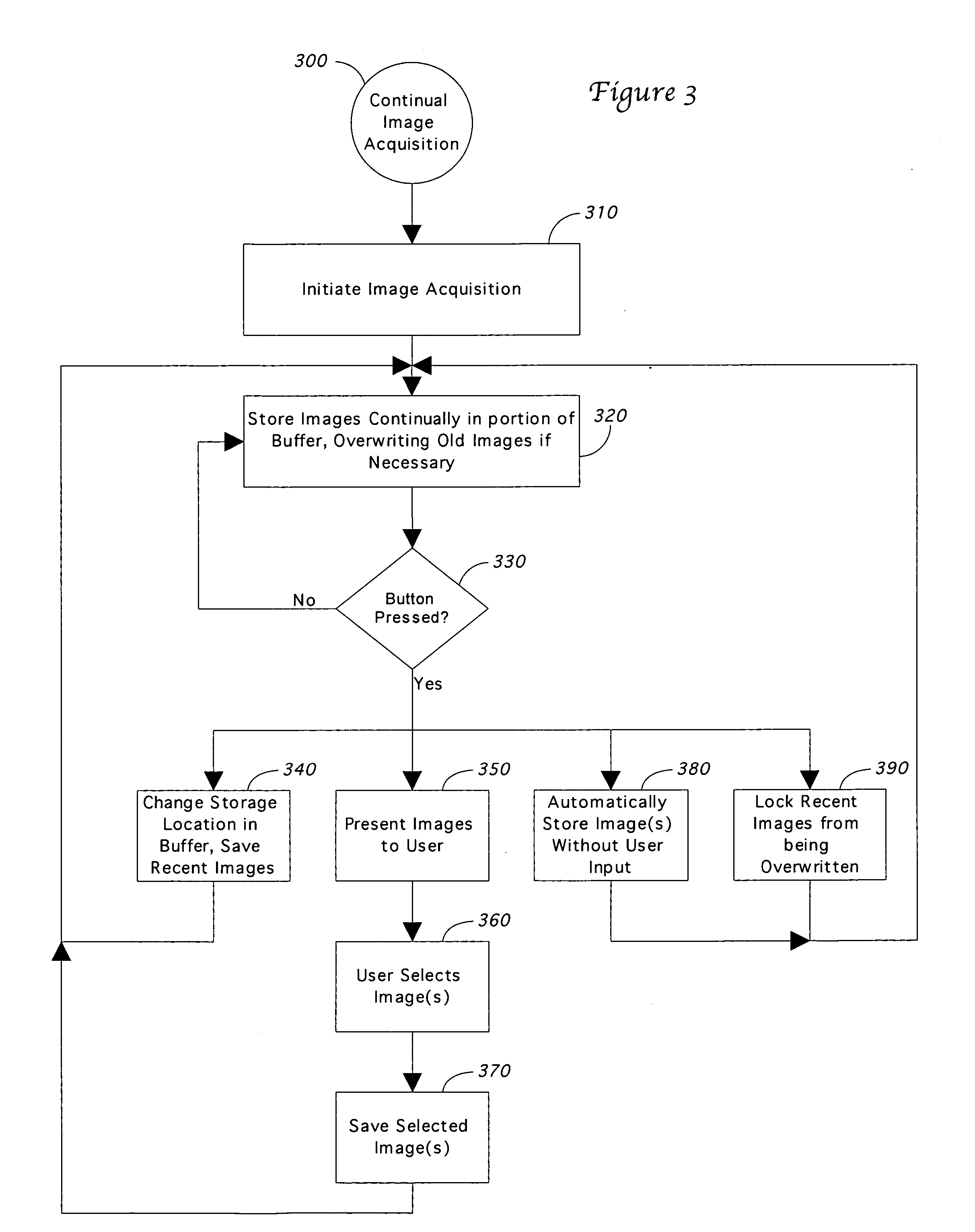Digital camera with continual image acquisition
a digital camera and image acquisition technology, applied in the field of digital cameras, can solve the problems of affecting the image acquisition effect, and the shutter lag of most expensive digital cameras under 500 milliseconds, and achieve the effect of continuous image acquisition
- Summary
- Abstract
- Description
- Claims
- Application Information
AI Technical Summary
Problems solved by technology
Method used
Image
Examples
Embodiment Construction
[0012] A digital camera 100 of the present invention is shown in FIG. 1. The light for an image is acquired through lens 110, which focuses the light on an image sensor 120. The image sensor can be a CCD sensor, a CMOS sensor, or an X3 image sensor from Foveon, Inc. (Santa Clara, Calif.). X3 is a registered U.S. trademark of Foveon, Inc. The X3 image sensor uses three separate layers of pixel sensors embedded in silicon, as opposed to the traditional CCD and CMOS sensors that use a single layer of pixel sensors in a tiled mosaic pattern. The use of the mosaic pattern means that some pixels receive red light, some green light, and some blue light, but no pixel can measure more than one color. Well-known mathematical interpolation techniques are used to determine a value for all three colors at a given pixel. Since the X3 sensor captures red, green, and blue light at every pixel, there is no need for complex interpolation to estimate the color levels at pixels that lack a sensor for a...
PUM
 Login to View More
Login to View More Abstract
Description
Claims
Application Information
 Login to View More
Login to View More - R&D
- Intellectual Property
- Life Sciences
- Materials
- Tech Scout
- Unparalleled Data Quality
- Higher Quality Content
- 60% Fewer Hallucinations
Browse by: Latest US Patents, China's latest patents, Technical Efficacy Thesaurus, Application Domain, Technology Topic, Popular Technical Reports.
© 2025 PatSnap. All rights reserved.Legal|Privacy policy|Modern Slavery Act Transparency Statement|Sitemap|About US| Contact US: help@patsnap.com



